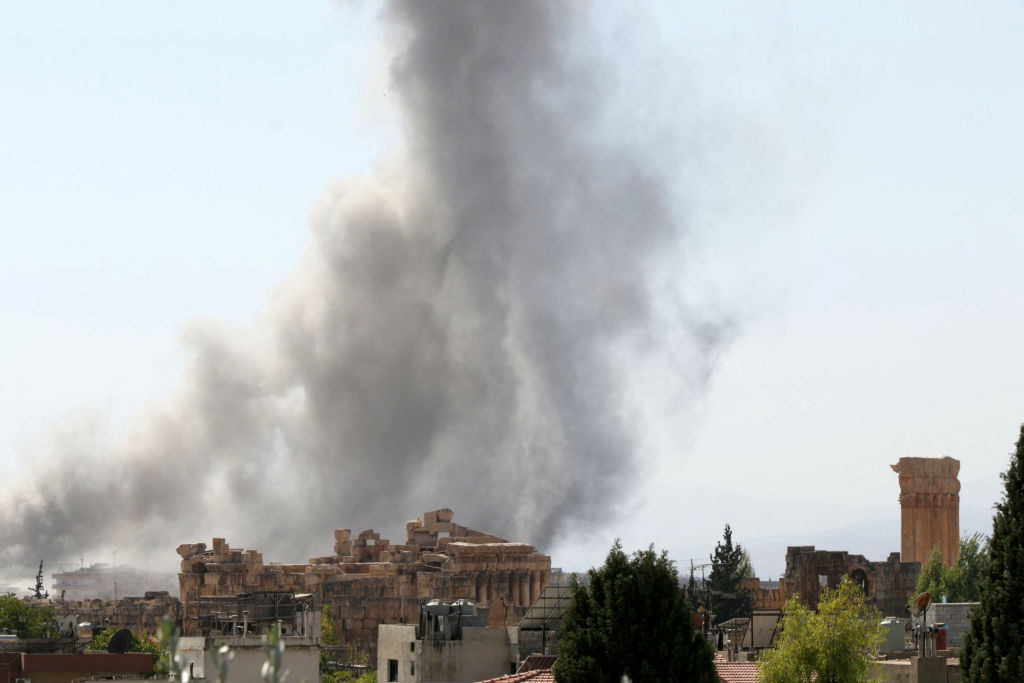Lebanese Culture Minister Mohammad Mortada has called for international action after an Israeli airstrike hit perilously close to Baalbek, a triad of Imperial Roman temples and UNESCO World Heritage Site in northern Lebanon. Local media reported that the strike landed only 500 meters away from the ruins, in the city of Baalbek.
Mortada confirmed to the New Arab that the site was unharmed, but stressed how that status is tenuous as the aerial bombardment of Lebanon continues.
He added that he directed the Lebanese delegate to UNESCO, the cultural arm of the United Nations, to communicate the urgency of the situation. “UNESCO is responsible for looking over these sites, and we’ve asked our mission to inform the UN and its Security Council to demand Israel to respect international laws and not harm our heritage,” he said.
Over the weekend, images on social media showed a large plume of smoke rising behind the monumental columns of the Jupiter Temple in Baalbek, drawing criticism from people in and beyond the art world. Céline Semaan, the founder of the Slow Factory, a nonprofit arts organization dedicated to human rights, shared an image of Baalbek on Instagram, writing, “How are we allowing our heritage to go up in flames while erasing our voices and our presence from every single place in the so-called civilized world?”
The 11,000-year-old Phoenician city of Baalbek is home to a trio of temples dedicated to the Roman deities Jupiter, Venus, and Mercury. The colossal structures were constructed over more than two centuries and served over that span as a popular sanctuary and site of religious pilgrimage.
“Baalbek, with its colossal structures, is one of the finest examples of Imperial Roman architecture at its apogee,” UNESCO wrote in its citation. UNESCO has six World Heritage Sites listed in Lebanon, among them Tyre, one of the oldest continuously habituated cities in the world, and the historic center of Saida, the capital city of southern Lebanon. Since the escalation of aerial strikes against Lebanon on September 23—a ground invasion commenced last week—more than 1 million Lebanese people have been displaced. The towns and villages in the southern region of the country bordering Israel, as well as the southern Beirut suburbs, have come under particularly intense fire.
The military aggression in Lebanon is, in part, an expansion of Israel’s war in Gaza, which hit its one-year mark on October 7. More than 41,000 people have died in Gaza within that year, with numerous cultural landmarks in Palestine also suffering damage or outright destruction. The Church of St. Porphyrius in Gaza, thought to be the world’s third-oldest church, has been struck twice by Israeli missiles. In May, a report from the United Nations Development Programme estimated that 341 mosques had been destroyed.
Art centers in Gaza have also been drawn into the war. Shababeek for Contemporary Art, which housed more than 20,000 artworks, was struck during Israel’s two-week siege on a hospital complex nearby. The operation “leveled the entire building,” according to Hyperallergic. The destruction in Palestine has fueled fears that Lebanon’s cultural landscape, which is already enduring a historic economic depression, may suffer a similar fate.
“We told the UN ‘If you can’t stop violations against civilians, fine, but at least make sure our [ancient] stones are protected,’” Mortada sad.

